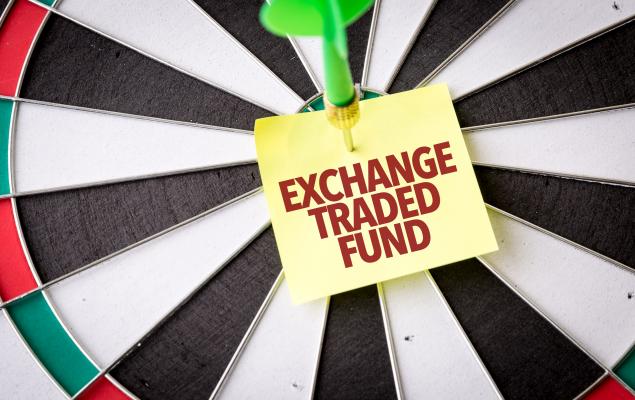Here's Why Small-Cap ETFs Are Sizzling With Opportunities

Image: Shutterstock
Investors have multiple reasons to cheer as the U.S. economy is recovering from the pandemic-led slump amid the rising delta variant cases. The impressive second-quarter earnings reason, data reflecting moderating inflationary pressure along with solid jobs report for July are some factors that are keeping the investing environment upbeat.
Riding these factors, the small-cap-centric index, namely, the Russell 2000, has also gained about 2.5% over the past five days and 2.2% in the past month. This upside is being largely led by small-cap companies that are closely tied to the U.S. economy and are therefore well-positioned to outshine when the economy improves.
Let’s discuss the factors keeping investors optimistic and creating a good environment for parking money in small-cap ETFs in details:
According to the Labor Department report, the consumer-price index increased 5.4% year over year in July and was up 0.5% sequentially (per a CNBC article). Also, there was a 0.3% sequential rise in core inflation (excludes energy and food prices) in July along with a 4.3% year-over-year increase.
In this regard, Brad McMillan, chief investment officer at Commonwealth Financial Network, has commented that “Inflation has, at a minimum, paused. For both the headline and core figures, the monthly and annual numbers were stable or down from last month. Based on that data, inflation is certainly not on an unstoppable increase,” according to a CNBC article.
The passage of the bipartisan infrastructure bill of $550 billion in addition to the previously approved funds of $450 billion for five years by the Senate has also brought in a new wave of optimism for particularly cyclical sectors like industrials and materials. Total spending may go up to $1.2 trillion if the plan is extended to eight years. The spending on the infrastructure will help instill more strength in the economy.
Market analysts also seem to be upbeat about the second-quarter earnings season, which has already seen better-than-expected results, stimulating the rally in stock markets. Per FactSet data, 87% of the S&P 500 companies reported an earnings surprise (per a CNBC article). Notably, considering the current earnings beat percentage, this might stand out as the best quarter for earnings surprises since 2008, according to a CNBC report.
Moreover, the latest jobs report, which highlights improving employment conditions in the United States, is boosting optimism levels. According to the Labor Department, the U.S. economy added 943,000 jobs (he best since August 2020) last month amid surging delta variant woes, as stated in a CNBC article. The metric surpassed the Dow Jones estimates of adding 845,000 jobs in July.
The unemployment rate also declined to 5.4%, comparing favorably with the estimate of 5.7%, per a CNBC report. Commenting on the jobs data, Robert Frick, corporate economist at Navy Federal Credit Union, has said that “This not only was a strong jobs report by nearly every measure, it also signals more good things to come,” according to a CNBC article.
Consumer confidence in the United States also seems impressive as it stays at its highest level since February 2020. The Conference Board's measure of consumer confidence index stands at 129.1 in July, comparing favorably with June’s reading of 128.9.
Going on, the U.S. GDP grew at a 6.5% annualized rate in the second quarter of 2021, per the Commerce Department’s first estimate (as mentioned in a CNBC article). However, the metric lagged the Dow Jones estimate of 8.4%. Despite missing the estimate, in absolute terms, U.S. GDP came in at $19.4 trillion in second-quarter 2021, exceeding $19.2 trillion recorded in fourth-quarter 2019 (the last quarter before the outbreak of coronavirus).
Moreover, the Fed’s continued support with easy monetary policies and fiscal stimulus support are strengthening hopes of rapid recovery from the coronavirus-led slump.
Red-Hot Small-Cap ETFs to Consider
For investors looking to capitalize on this opportunity, the following small-cap ETFs could be strong pure plays:
Vanguard Small-Cap Growth ETF (VBK Quick Quote VBK - Free Report)
This fund follows the CRSP US Small Cap Growth Index. The product managed assets worth $16.05 billion and charges 7 basis points (bps) in annual fees and expenses.
iShares Russell 2000 Growth ETF (IWO Quick Quote IWO - Free Report)
This fund tracks the Russell 2000 Growth Index and offers exposure to small-cap companies that have earnings growth expectations above-average rate relative to the market. The product managed assets worth $11.99 billion and charges 24 bps in annual fees and expenses.
iShares S&P Small-Cap 600 Growth ETF (IJT Quick Quote IJT - Free Report)
This product tracks the S&P SmallCap 600 Growth Index. It managed assets worth $6.30 billion and charges 18 bps in annual fees and expenses.
SPDR S&P 600 Small Cap Growth ETF (SLYG Quick Quote SLYG - Free Report)
This ETF follows the S&P SmallCap 600 Growth Index, which comprises stocks that exhibit the strongest growth characteristics based on sales growth, earnings change to price, and momentum. The product managed assets worth $2.34 billion and charges 15 bps in annual fees and expenses.
Disclaimer: Neither Zacks Investment Research, Inc. nor its Information Providers can guarantee the accuracy, completeness, timeliness, or correct sequencing of any of the Information on the Web ...
more


